Quake III Arena Performance- Quaver
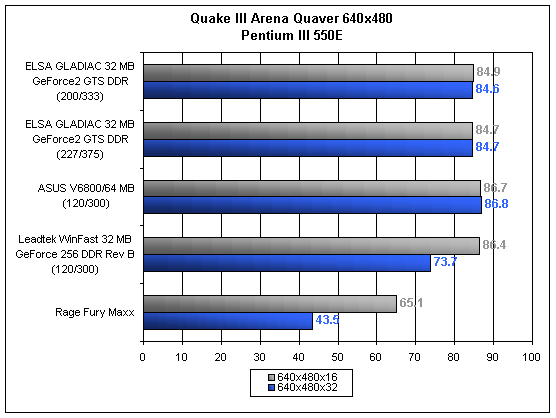
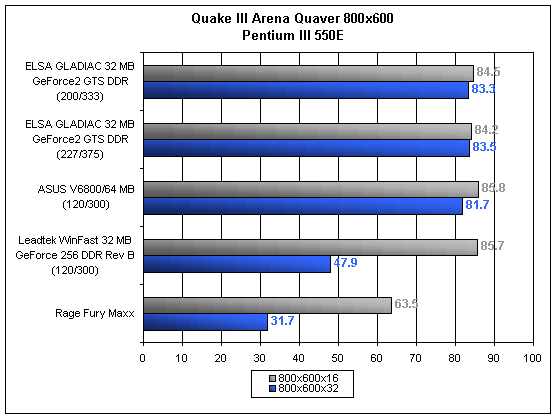
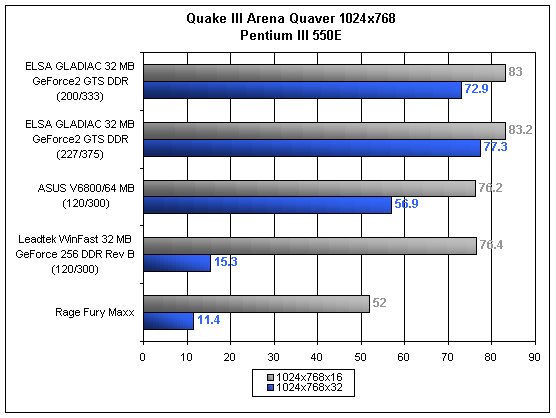
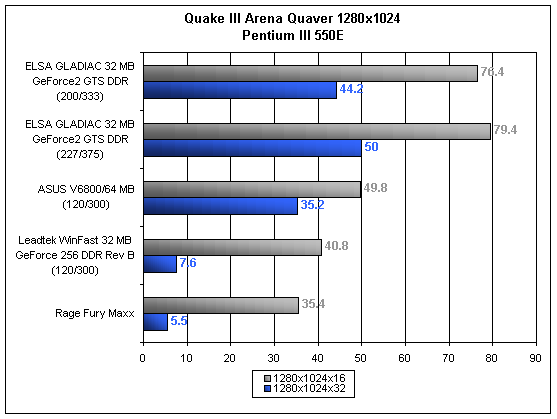
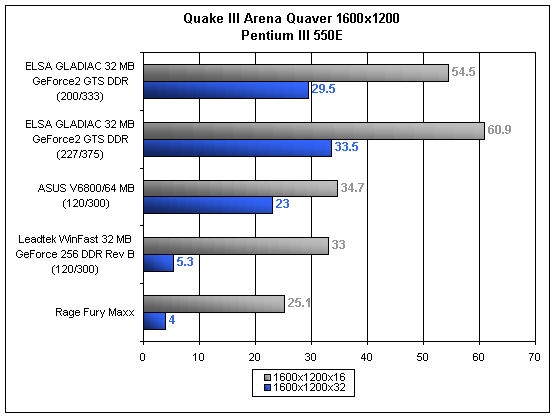
Under the heavy strain of Quaver we find that the DDR GeForce takes a big hit due to the lack of texture compression found in the 5.16 drivers. The 3.68 drivers used to test the GeForce 256 based cards (as described in The Test section) do not have the S3TC compression found in the 5.16 drivers. Therefore, the GeForce 2 GTS is left with only one opponent, the 64 MB GeForce. Once again we find that the differences between the GeForce 2 GTS and the GeForce 256 start to become noticeable at 1024x768x32. At resolutions and colors higher than this, we find that the GeForce 2 GTS dominates the GeForce 256 simply due to the raw power present in the GLADIAC. We also find that once again that 32-bit color seems to be a limiting factor due to memory clock speed: the GeForce 2 GTS really out performs the GeForce 256 when in 16-bit colors because less data needs to be transferred over the relatively slow memory bus.
Under the most stressful of Quake III Arena situations, modeled by Quaver, we find that the GLADIAC is able to perform well at resolutions as high as 1280x1024x32. At 44.2 FPS, the speed is still fast enough to be played by many (a debatably fact) and the card is going 25% faster than it's older sibling. When overclocked, the game becomes even more playable at this high resolution and color depth, achieving a 42% speed increase over the GeForce 256.










0 Comments
View All Comments